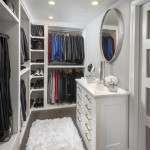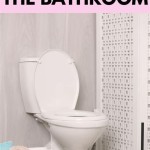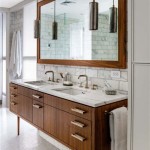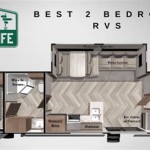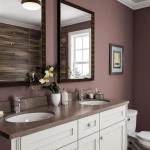The Comprehensive Guide to Bathroom Exhaust Fans with Light and Nightlight
Bathroom exhaust fans are essential components of a well-ventilated and comfortable bathroom environment. They serve to remove excess moisture and odors, preventing mold growth and maintaining air quality. Incorporating a light and nightlight feature within the exhaust fan unit adds layers of functionality, enhancing safety and convenience within the bathroom space. This article provides a comprehensive overview of bathroom exhaust fans with light and nightlight, covering their benefits, types, installation considerations, maintenance, and troubleshooting issues.
Benefits of Using a Bathroom Exhaust Fan with Light and Nightlight
The integration of light and nightlight features into a bathroom exhaust fan provides several discrete advantages over a standard exhaust fan. These include enhanced safety, improved convenience, and energy efficiency.
Enhanced Safety: The primary safety benefit comes from improved visibility, particularly during nighttime hours. A nightlight eliminates the need to turn on the main bathroom light for brief visits, reducing the risk of slips and falls, especially for children and the elderly. The main light integrated with the exhaust fan also provides ample illumination for grooming and cleaning activities, minimizing shadows and visibility issues.
Improved Convenience: Having the exhaust fan, light, and nightlight combined into a single unit simplifies bathroom design and installation. It reduces the number of separate electrical connections and mounting points required. The nightlight feature also provides a gentle ambient light source, eliminating the need for additional nightlights that occupy electrical outlets.
Energy Efficiency: Modern bathroom exhaust fans with light and nightlight often utilize energy-efficient LED lighting. LEDs consume significantly less energy than traditional incandescent or halogen bulbs, resulting in lower electricity bills and a reduced environmental footprint. The nightlight, with its low wattage, further contributes to overall energy savings.
Odor and Moisture Control: As with a standard exhaust fan, the primary function remains moisture and odor removal. Effective ventilation is crucial for preventing mold and mildew growth, which can lead to health problems and structural damage to the bathroom.
Types of Bathroom Exhaust Fans with Light and Nightlight
Bathroom exhaust fans with light and nightlight are available in a variety of types and configurations, each suited for different bathroom sizes and installation requirements. Understanding these types is crucial for selecting the appropriate unit for a specific application.
Ceiling-Mounted Fans: These are the most common type of bathroom exhaust fan. They are installed directly into the ceiling and vent through the attic to the outdoors. Ceiling-mounted fans are typically quieter and more efficient than other types. They often incorporate both the main light and the nightlight within the same housing.
Wall-Mounted Fans: Wall-mounted fans are installed on an exterior wall of the bathroom. They are often used in bathrooms where attic access is limited or where ceiling installation is not feasible. Wall-mounted fans typically have a lower CFM (cubic feet per minute) rating than ceiling-mounted fans and may be slightly louder. Some models may have the light and nightlight built directly into the fan housing, while others may require separate light fixtures.
Inline Fans: Inline fans are mounted remotely, typically in the attic or crawlspace, and connected to the bathroom via ductwork. This allows for extremely quiet operation in the bathroom itself. The light and nightlight functions can be integrated into a separate fixture in the bathroom ceiling, connected to the fan's wiring. Inline fans are ideal for larger bathrooms or for those who are particularly sensitive to noise.
Combination Units: Some manufacturers offer combination units that incorporate a heater in addition to the exhaust fan, light, and nightlight. These units provide all four functions in a single housing, simplifying installation and minimizing the number of devices needed in the bathroom.
Smart Fans: Modern technology has led to the development of "smart" bathroom exhaust fans. These fans can be controlled remotely via a smartphone app or voice assistant. They may also include features such as automatic humidity sensing, which activates the fan when humidity levels reach a certain threshold. These fans can offer dimmable light options and customizable nightlight settings.
Installation Considerations for Bathroom Exhaust Fans with Light and Nightlight
Proper installation is critical for the safe and effective operation of a bathroom exhaust fan with light and nightlight. Several factors must be considered before beginning the installation process.
Proper Sizing (CFM): The first step is to determine the appropriate CFM rating for the bathroom. A general rule of thumb is to have at least 1 CFM per square foot of bathroom area. For bathrooms with a toilet and shower/tub, a higher CFM rating may be required. Online calculators and manufacturer guidelines can help determine the optimal CFM for a specific bathroom size and configuration.
Electrical Wiring: All electrical work must be performed in accordance with local building codes. It is essential to ensure that the electrical circuit is properly grounded and capable of handling the load of the exhaust fan, light, and nightlight. If unsure, consult with a qualified electrician.
Ductwork and Venting: The exhaust fan must be properly vented to the outdoors to effectively remove moisture and odors. The ductwork should be as short and straight as possible to minimize airflow resistance. Insulated ductwork is recommended to prevent condensation within the duct and to reduce noise. The vent should be located at least 3 feet away from windows and doors to prevent re-entry of moist air.
Mounting and Securing: The exhaust fan should be securely mounted to a ceiling joist or wall stud. Use appropriate mounting hardware to ensure that the fan is stable and does not vibrate excessively. For ceiling-mounted fans, ensure that the fan housing is flush with the ceiling surface.
Installation Steps:
- Turn off the power to the circuit breaker that controls the bathroom light and any existing exhaust fan.
- Remove the old exhaust fan, if applicable.
- Install the new exhaust fan housing, ensuring proper mounting and securing.
- Connect the wiring according to the manufacturer's instructions. Typically, there are black, white, and green (ground) wires to connect.
- Connect the ductwork to the exhaust fan housing and secure it with clamps or foil tape.
- Install the fan grille and light/nightlight components.
- Turn the power back on and test the fan, light, and nightlight functions.
Maintenance and Troubleshooting
Regular maintenance can extend the lifespan of a bathroom exhaust fan with light and nightlight and ensure optimal performance. Simple troubleshooting steps can resolve many common issues.
Cleaning the Fan Grille: The fan grille should be cleaned regularly to remove dust and debris that can accumulate and reduce airflow. Use a vacuum cleaner with a brush attachment or a damp cloth to clean the grille. Cleaning frequency depends on the air quality and usage but is recommended every 3-6 months.
Cleaning the Fan Blades: Periodically, the fan blades may need to be cleaned. Turn off the power to the exhaust fan before removing the fan grille and accessing the blades. Use a soft brush or cloth to remove dust and debris from the blades.
Replacing Light Bulbs: When a light bulb burns out, replace it with a bulb of the correct wattage and type. LED bulbs typically last much longer than traditional bulbs, but they will eventually need to be replaced.
Troubleshooting Common Problems:
- Fan Not Working: Check the circuit breaker to ensure that it has not tripped. Verify that the wiring is properly connected. If the fan motor is making noise but not turning, the motor may be damaged and need to be replaced.
- Fan is Noisy: Check for loose mounting screws or debris obstructing the fan blades. Ensure that the ductwork is not kinked or blocked.
- Light Not Working: Check the light bulb to ensure that it is not burned out. Verify that the wiring to the light fixture is properly connected.
- Fan Not Exhausting Properly: Ensure that the ductwork is not blocked or restricted. Verify that the CFM rating of the fan is adequate for the size of the bathroom.
Professional Assistance: If troubleshooting steps do not resolve the problem, consider contacting a qualified electrician or HVAC technician for assistance. Professional help may be needed for complex electrical issues or motor repairs.
Akicon Ultra Quiet Bathroom Exhaust Fan 110 Cfm With Light And Nightlight 3000k Ak1424orb The Home

Ef Az107wh Azi Midnight Series 100 Cfm Ceiling Mount Bathroom Exhaust Fan With Brilliant Led Panel
Akicon Bathroom Exhaust Fan With Light Dimmable 3cct Led Night 80 Cfm 2 Sones Round Silver Ak1314k1 S The Home

750 Broan 100 Cfm Ventilation Fan With Light And Night Round White Grille Glass Lens 5 0 Sones Granite City Electric Supply
Akicon Bathroom Exhaust Fan With Light Dimmable 3cct Led Night 80 Cfm 2 Sones Square Black Ak1314k2 B The Home

Night Light Bathroom Fans Heaters At Com

Akicon Ultra Quiet Bathroom Exhaust Fan With Led Light And Nightlight 110cfm 1 5 Sone Oil Rubbed Broe Finish Bright White

Ultra Quiet Bathroom Exhaust Fan With Led Light Nightlight 110 Cfm 1 5 Sone Ventilation Round Frosted Glass Cover Oil Rubbed
Reviews For Akicon Bathroom Exhaust Fan With Light Dimmable 3cct Led Night 80 Cfm 2 Sones Square Black Pg 1 The Home

Whisper Mighty Exhaust Fan With Led Light 70 90 Cfm Panasonic North America United States
See Also

